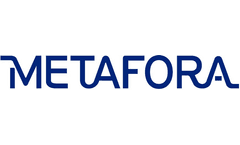Brain Drain In Developing Articles & Analysis
16 articles found
Alfa Cytology has introduced its advanced drug development services for brain tumors. Alfa Cytology, celebrated for its cutting-edge biotech solutions and extensive tumor research expertise, has recently introduced brain tumor drug development services, designed to empower researchers in understanding the intricacies and unique challenges associated with brain tumors. Brain tumors represent a ...
Human brain has approximately 171 billion cells, of which slightly more than half (approximately 86 billion) are nerve cells. These 86 billion nerve cells are a diverse cell population with hundreds of specialized types and functions, but all originate from three neural cell lineages--neurons, oligodendrocytes and astrocytes. All three cell lineages originate from a pool of neural stem and ...
IntroductionNatural lipids, also known as healthy fats, play a crucial role in maintaining our overall health and well-being. These essential components are found in various foods and have been extensively studied for their numerous benefits. In this article, we will delve into the world of natural lipids, exploring their importance, sources, and the positive impact they have on our bodies. What ...
ByMatexcel
Ongoing research and inventions in the field of oncology focus on the development of small molecule drug therapies for use in brain tumor resection. Small molecule drugs are being developed to target and effectively treat brain tumors to improve therapeutic outcomes. Small particles containing compounds that can enter cells and interact with specific targets to inhibit or modulate their ...
About Tumor Suppressor Genes A tumor suppressor gene, also known as anti-onco gene, is an essential component of the body's defense against cancer. It usually facilitates apoptosis. With its absence, the human body will be functioning without its “brake” of cell proliferation. Cells are potent to go under abnormal growth processes and finally lead to tumor/cancer. Here are some key ...
Human brain has approximately 171 billion cells, of which slightly more than half (approximately 86 billion) are nerve cells. These 86 billion nerve cells are a diverse cell population with hundreds of specialized types and functions, but all originate from three neural cell lineages--neurons, oligodendrocytes, and astrocytes. All three cell lineages originate from a pool of neural stem and ...
Lung cancer is a major type of cancer in the world, with the highest morbidity and mortality among all malignant tumors. ALK-positive non-small cell lung cancer (ALK+ NSCLC) is a relatively rare and dangerous subtype, with patients suffering from a high incidence rate of brain metastases. Statistics show that about 55% of ALK-positive advanced NSCLC patients will develop brain metastases during ...
Close-up on chromatin modifications Despite recent advances in spatial transcriptomics to map gene expression, it has not be possible to determine the underlying epigenetic mechanisms controlling gene expression and tissue development with high spatial resolution. Denget al. report on a technique called spatial-CUT&Tag for genome-wide profiling of histone modifications pixel by pixel on ...
The coronavirus pandemic remains one of the top concerns within the United States. However, Johns Hopkins, and other research centers, are actively working to continue medical research in all divisions of medicine and health. Learn the ongoing studies at Johns Hopkins, what issues they are solving and how we can all make a difference. ...
An adult human brain contains approximately 86 billion neurons, along with about 85 billion non-neuronal cells. All those cells work together to manage motor control, sensory perception, heart rate, breathing, and more. While the human brain is extremely complex, with the ability to process language, it is not totally unique. Most vertebrate brains are quite similar; they all need similar ...
METAFORA is proud to announce that its first publication related to the use of its technology to diagnose a rare metabolic disease rapidly and efficientely has been accepted for publication in the reference journal, Annals of Neurology. The test is being commercialized under the name METAglut1 and was recently CE marked. It is available in France through the CERBA network of clinical testing ...
Following a successful fundraising in Q4 2016, METAFORA achieves an important milestone by announcing, in partnership with CERBA Healthcare, the availability of the METAglut1 blood test to diagnose the GLUT1 deficiency syndrome (GLUT1 DS). Through METAglut1, our disruptive technology becomes available, for the first time, to patients. De Vivo’s disease (the other name of GLUT1 DS) is ...
Brain drain is defined as the movements of highly skilled labour forces, the human capital, from a country to another due to different reasons. ...
The success of the University of Hargeisa in Somaliland demonstrates how the flow of skilled migrants from the developing to the developed world – once viewed merely as brain 'drain' – may in fact be more accurately described as an imperfect circular flow of skilled workers, knowledge, finance, and development. ...
Emigration of highly skilled workers from the global South to the global North or brain drain is a major contributing factor to the increased economic and social disparities in the developing world. ...
Data on Polybrominated diphenylether (PBDE) concentrations in individual U.S. women were compiled. PBDE levels in adipose tissue, serum, and breast milk from individual U.S. women were found to follow similar lognormal distributions, which exhibited a high degree of variability. The distribution of lipid-normalized PBDE concentrations for all media combined had a median of 47.9 ng/g and a 95th ...











